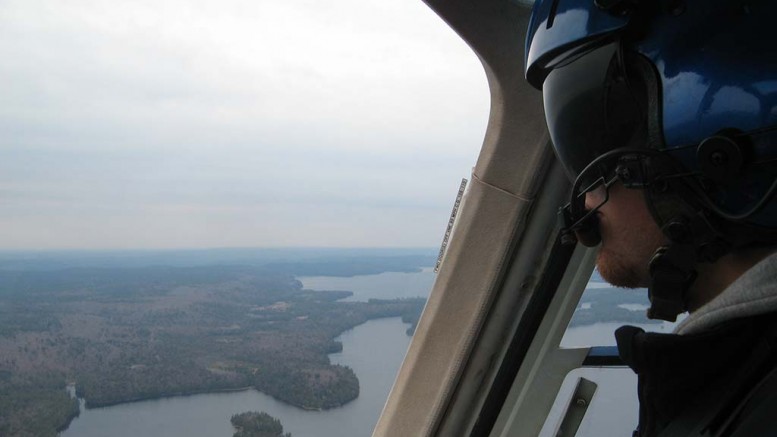Montreal-based Matamec Explorations (TSXV: MAT) is dividing its gold and energy-related projects into two entities in hopes of gaining more traction among investors.
“Our strategy is to split Matamec into two,” Andre Gauthier, the company’s president, said in a recent interview in Toronto.
This makes it easier for investors because those with an appetite for gold exploration could stick with Matamec Explorations, which will be renamed Matamec Gold. Those interested in elements for technologies related to energy — such as rare earth elements (REE), lithium and cobalt — could invest in Matamec Energy, Gauthier says.
Matamec has transferred its energy-related properties — including its feasibility-stage Kipawa heavy REE deposit in Quebec — into its subsidiary Matamec Energy. It aims to list the subsidiary on the TSX Venture Exchange in 2017, largely depending on financing.
“We will cross our fingers that everything goes well,” Gauthier says.
Matamec is in the midst of acquiring the Casa Berardi South and Troilus North gold projects, and the Lorraine nickel-cobalt-platinum-palladium-rhodium project from Greg Explorations. All three are in Quebec.
The junior also aims to complete National Instrument 43-101 reports on all of its projects once it secures more financing for both of its companies.
Matamec holds eight gold projects across Ontario and Quebec, including the two that it is in the process of acquiring.
Of note, the Casa Berardi South gold property sits near Hecla’s (NYSE: HL) producing Casa Berardi gold mine in Quebec.

A worker cuts a channel sample in 2010 from the Kipawa deposit at Matamec Exploration’s Zeus REE project in Quebec. Credit: Matamec Exploration.
Along the stratigraphic rock formations east of Goldcorp’s (TSX: G; NYSE: GG) Hoyle Pond gold mine in Timmins, Ont., Matamec holds a 1% net smelter return royalty on the new HMR property, a 50% interest in the Matheson joint-venture property and a 100% interest in the Pelangio property.
It also holds two gold properties — 50% of the Sakami project and 100% of the Opinaca Gold West project — in the same geological setting as Goldcorp’s Éléonore gold mine in Quebec.
Of the eight, Sakami is the most advanced. Drilling began on the project mid-year, where one of the best holes returned 4.94 grams gold per tonne over 21.1 metres within a wide, gold-bearing intersection of 2.52 grams gold over 48.6 metres from the northwest extension of Zone 25 (main zone).
Meanwhile, Matamec Energy holds four energy-related properties, including the Tansim lithium project, the Fabre cobalt-silver project, Lorraine and Kipawa. All four sit in southwestern Quebec.
Matamec hopes to secure $5 million in financing for each of its two entities in 2017. The funds will bolster exploration work and technical reports.
Gauthier notes the Kipawa joint venture already has $1.3 million committed for next year, which will go towards the $5 million total for Matamec Energy.
Matamec owns 72% of Kipawa and Ressources Québec — a subsidiary of Investissement Québec — owns 28%. Toyota Tsusho Corp. holds a 10% royalty on net profit in the deposit.
An October 2013 feasibility study on Kipawa shows the project could produce 3,600 tonnes of mixed rare earth concentrate per year for 15 years. Estimated start-up costs are $374.4 million, with a 16.8% after-tax internal rate of return.
After the study, Toyota chose to convert its 49% stake in Kipawa into a royalty, citing it could buy cheaper REE in China.
However, the Quebec government, recognizing the quality of the project, stepped in to help Matamec advance Kipawa, Gauthier says.
Since 2013, Matamec has been optimizing the project’s metallurgy and process design, among other things, to improve costs.
“Our target is to reduce capex from $380 million to $200 million and the operating expenditures from $80 million to $50 million a year,” Gauthier says. Matamec plans to complete its second mini pilot plant in 2017, and publish an updated feasibility study in late 2017 or early 2018.
On Dec. 13, Matamec fell 11% to 4¢, within a 52-week range of 2¢ of 10.5¢.


Be the first to comment on "Matamec splits gold and energy projects into two companies"